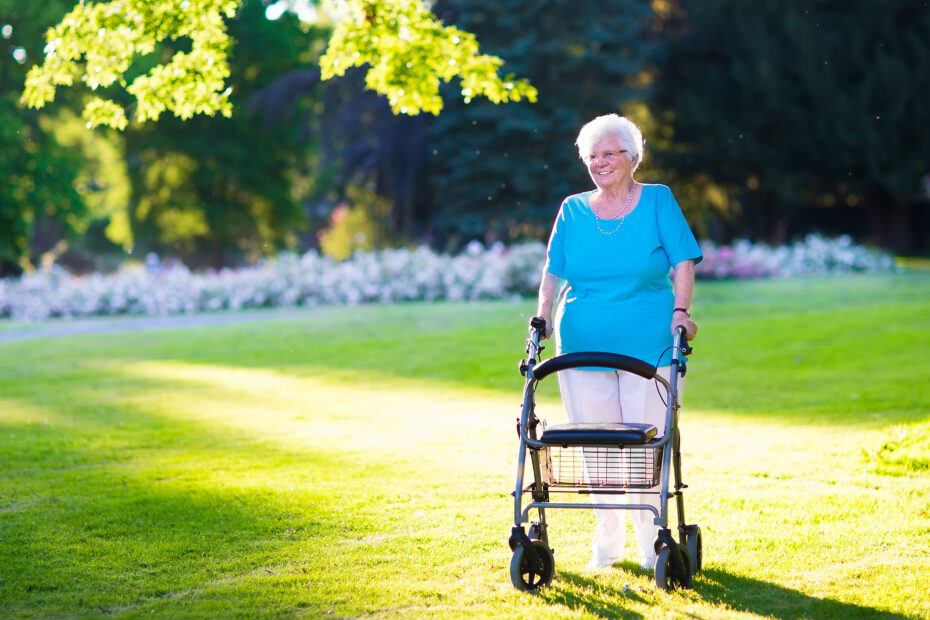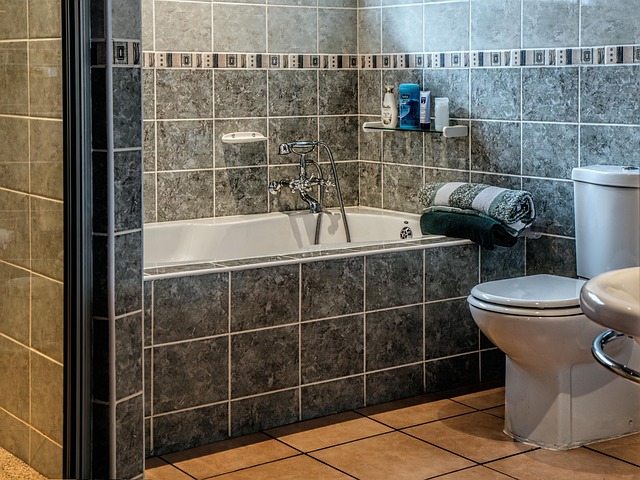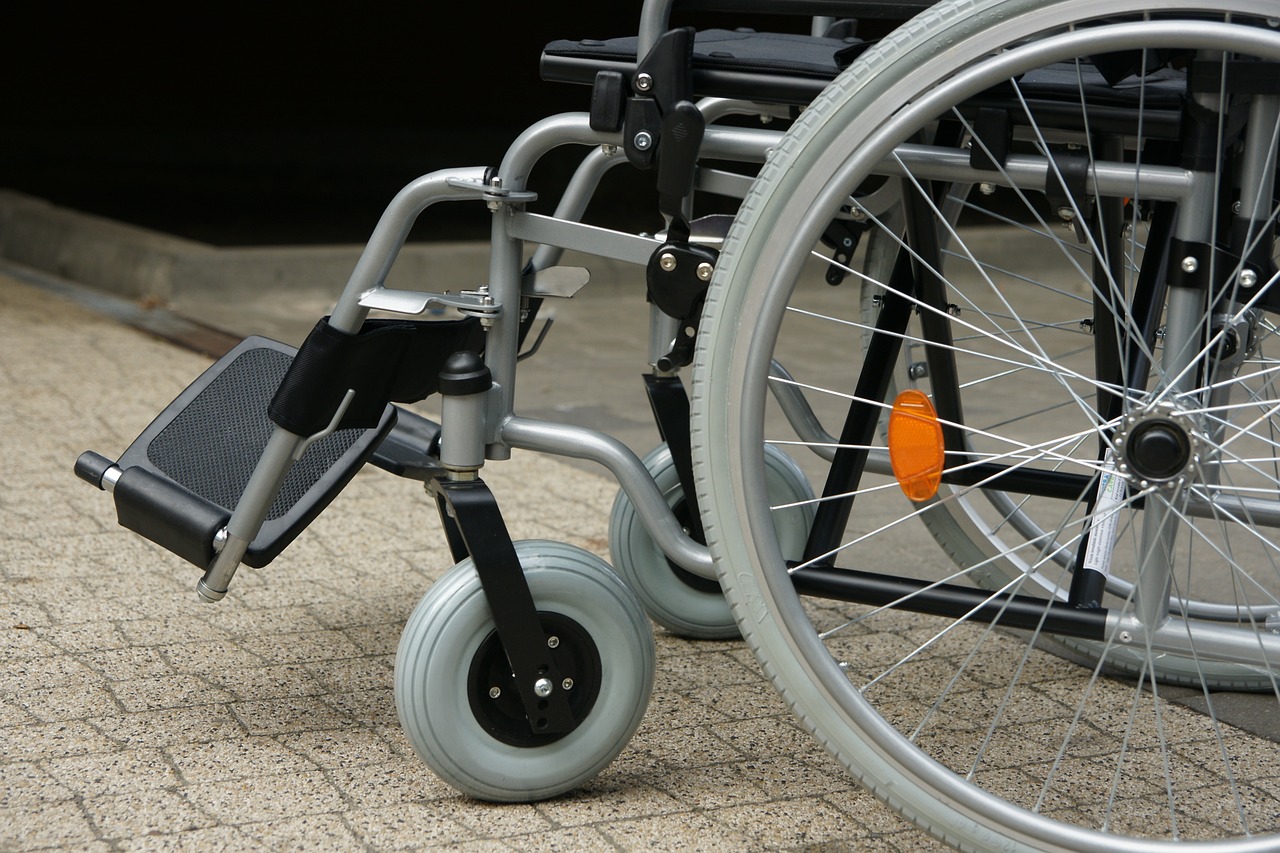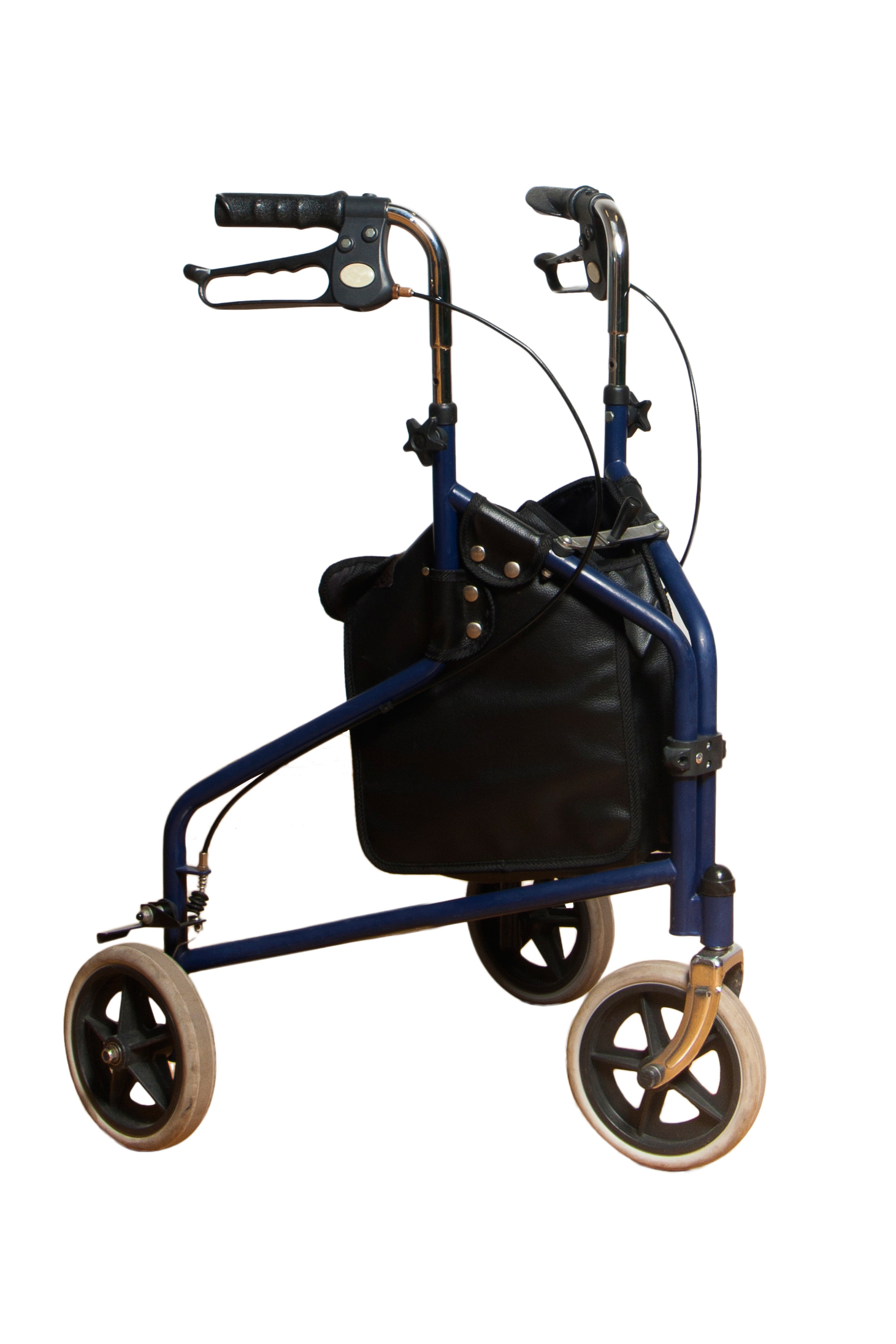From compact, 3-wheel rollators to simple standard walkers, seniors have a lot of options when it comes to choosing a walker.
Before picking out a walker though, understanding your specific mobility needs is crucial – the right choice can make a significant difference in your daily life, ensuring safety and comfort.
It’s important to start by assessing your physical condition and considering your mobility needs.
Some seniors may need a walker due to temporary issues like post-surgery recovery, while others may require a long-term solution for chronic conditions.
And knowing where you stand physically can help narrow down suitable options.
In this guide, we’ll go over the most common types of walkers out there, including when each is most suitable.
After reading, you’ll have a better understanding of which kind of walker is best suited for your situation.
Consulting healthcare professionals is a smart move before deciding on a walker. Doctors, physical therapists, or occupational therapists can offer tailored advice based on your health status, helping you find the best option to meet your goals.
Types of Walkers: Finding the Right Fit
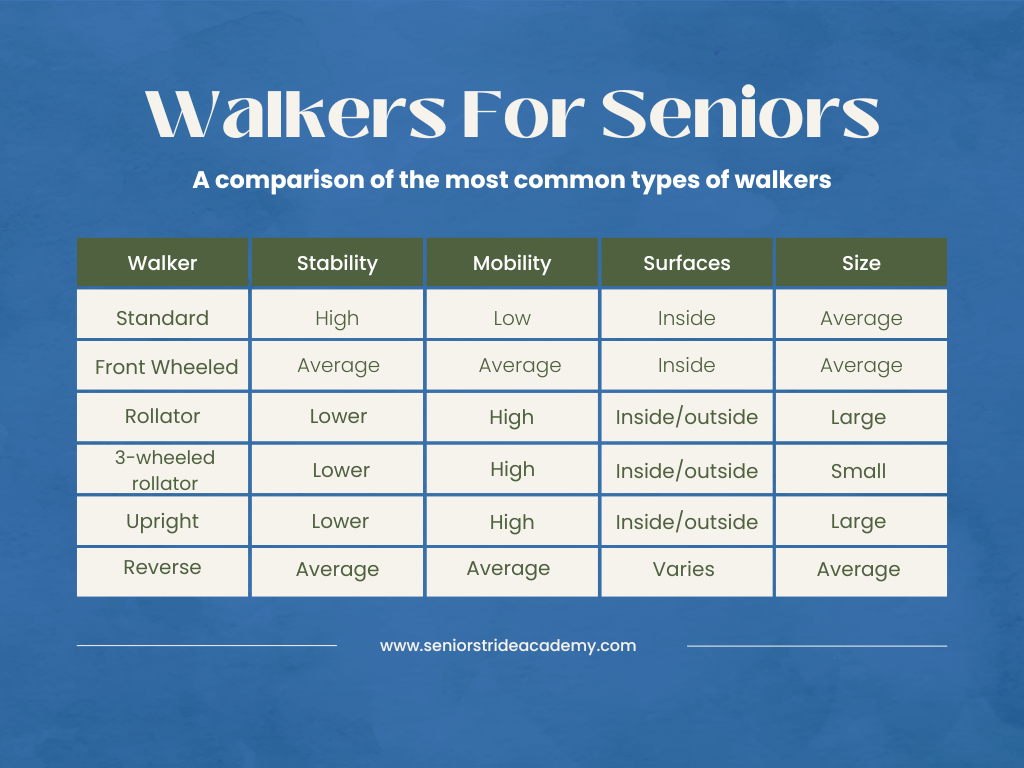
Different walkers are designed for various purposes, so choosing one depends largely on your condition and needs.
Walkers come in a lot of shapes and sizes, but most will still fall in one of these categories:
Standard Walkers
Standard walkers provide basic support with no wheels, ideal for those needing maximum stability.
Since they have no wheels, they require lifting between steps, which might not suit everyone, especially if arm strength is a concern.
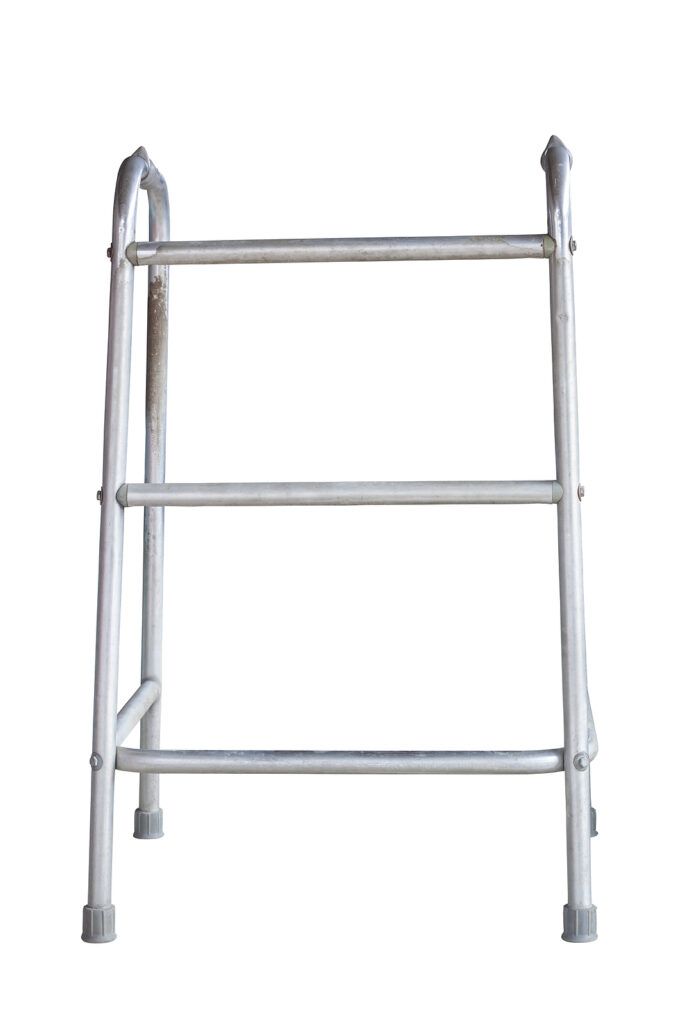
Having to lift for each step also significantly reduces gait speed, which can make standard walkers a bad choice for folks looking to normalize their gait pattern long term.
These walkers do offer a lot of stability though, making them a great choice for seniors who need the added stability.
Standard walkers can work well for folks with severe pain, significant leg weakness, or those who are dealing with severe balance issues.
Front Wheel Walker (FWW)
Front wheel walkers, medically abbreviated as “FWW”, are very common now because they offer a good deal of stability and mobility.
These walkers look a lot like standard walkers, but with the addition of two small wheels to the front legs, they can glide over smooth surfaces while offering good stability.
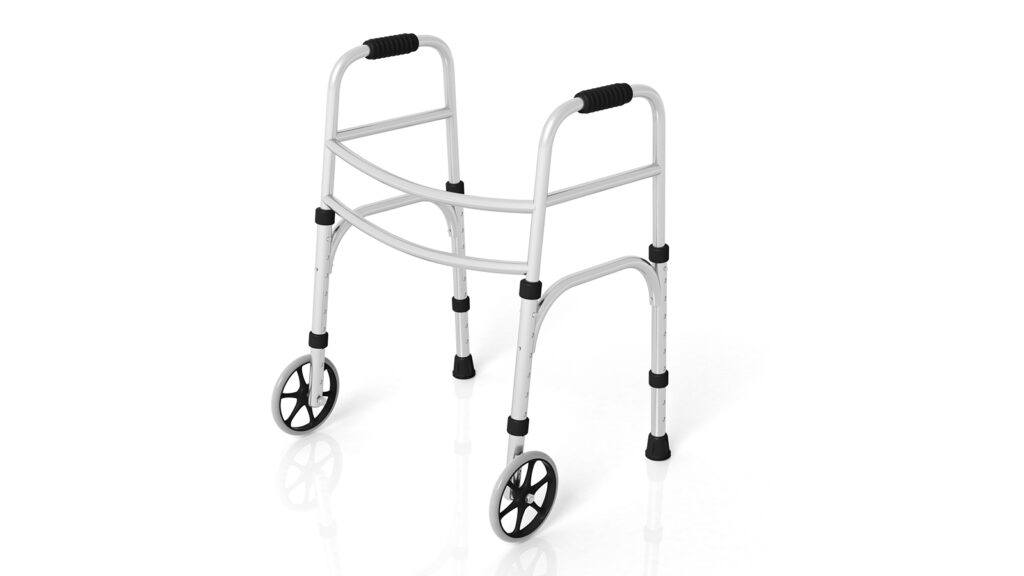
FWW are ideal for seniors who are a bit more mobile, but still need the stability of a walker over a cane.
That said, front wheel walkers work a lot better inside than outside.
FWW do ok over paved surfaces, but their small wheels struggle to go over gravel, grass, or any other rougher terrain.
If outside walking is what you’re planning on, a rollator may be more appropriate.
Rollators
Four-wheel walkers, aka “rollators”, come with wheels on all legs, providing enhanced mobility.
They are perfect for more active individuals who need the walker primarily for balance rather than weight-bearing.
Most models also include seats for resting, adding convenience for outdoor use.
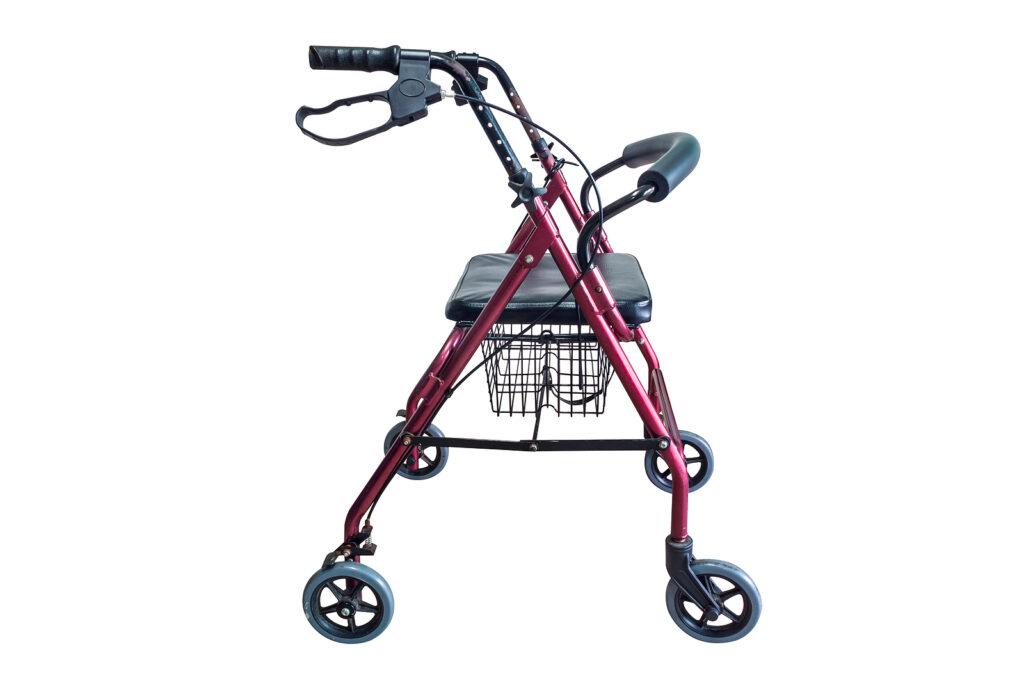
Rollators take the four-wheel design further by incorporating features like hand brakes, padded seats, and storage pouches.
The large wheels found on rollators are better suited for handling uneven surfaces outside and having the built in seat is great for seniors who get short of breath or tired easily.
The advanced features found on rollators often support a more independent lifestyle, but these walkers aren’t perfect.
Rollators tend to be larger and heavier, making them a little harder to handle and travel with when compared to FWW’s.
Rollators tend to cost quite a bit more too.
3-Wheel Rollators
As the name implies, these walkers come with 3 wheels instead of the 4 found on traditional rollators.
These walkers come with 2 rear wheels and 1 front wheel, making it more of a triangle shaped device.
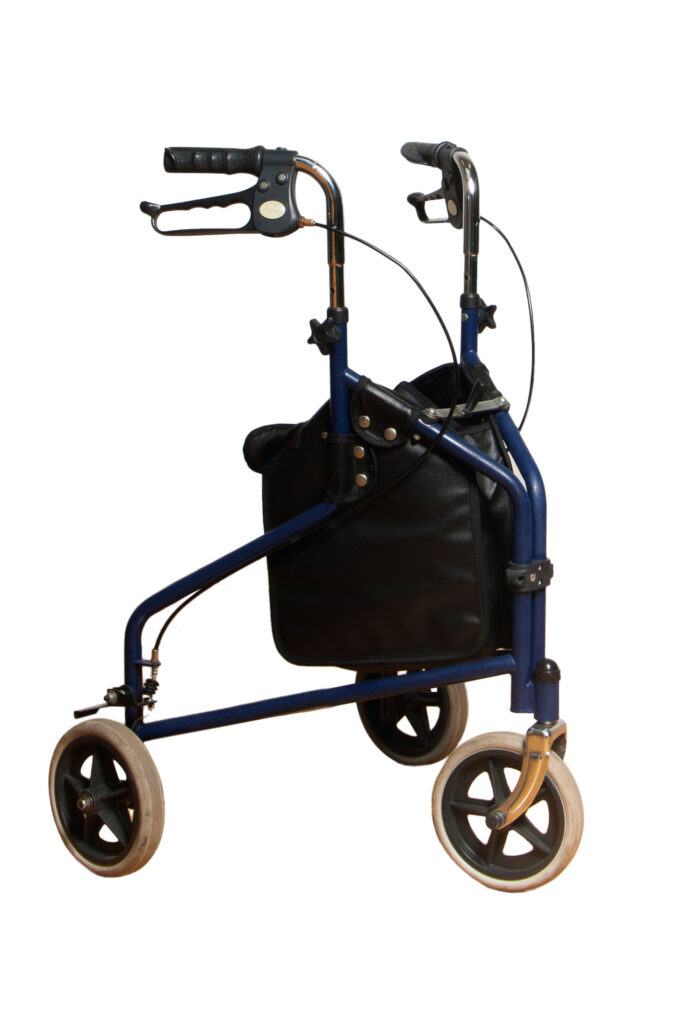
The shape of 3-wheel rollators make them a little less stable, but it also makes them smaller and easier to handle.
It also gives them a smaller footprint, allowing them to fit in smaller pathways and compact living spaces.
A 3-wheel rollator could be a good fit for seniors who don’t need a ton of stability when walking and are more interested in independence and being able to transport their walker without assistance.
These walkers can also work well in smaller homes with more crowded spaces.
Upright Walkers
Upright walkers come in various styles, but the most common over the counter models are really just rollators with forearm platforms.
Like rollators, most upright walkers come with 4 wheels, brakes, and a built-in seat.
But instead of holding the handles, you can stand more upright, resting your forearms on the elevated platforms, where you can also control the brakes.
I’ve worked with patients that opted for an upright walker because they thought they’d improve their posture- in some cases they helped, in others they didn’t.
Personally, I think an upright walker would work best for a senior that had core weakness or a maybe a neurological condition that made it difficult to stand upright.
If you can actively stand straight up, you may be better off with a traditional rollator, but personal preference certainly plays a role here.
FYI, upright rollators tend to be a little pricey.
Posterior Walkers (Reverse Walkers)
Posterior or “reverse” walkers aren’t quite as common as the walkers mentioned above, but they’re still worth mentioning because they are available.
With a posterior walker, the walker is held behind you (instead of in front) as you walk.
This frees up the space in front of you, making it easier to open doors and reach for stuff, but it also prevents you from leaning forward on your walker.
Having the walker behind you should also promote better spinal extension and posture.
Posterior walkers are used often in pediatrics, especially with children dealing with cerebral palsy, but seniors can also use them.
Posterior walkers come in various designs as well, with different features depending on the model.
Key Features to Look For in a Walker
Ok, the above represent the majority of walkers out there and your status and your needs for your walker are what should primarily drive the decision on which style you choose.
But there are still some other considerations that should be made when choosing a specific walker.
These include:
- Height adjustability (size)
- Weight capacity
- Foldability
- Weight
- Accessories
- Price
Adjustable height and handle types are essential because they ensure the walker fits you perfectly.
A properly adjusted walker can prevent strain on your back and improve your overall comfort while using it.
Fortunately, all walkers are height adjustable these days, but you still need to make sure the one you choose can accommodate your height before purchasing.
Most walkers come in a standard size and a youth size – if you’re under 5′ tall, the youth size may fit you better.
Weight capacity and durability matter too, especially if you require a walker for long-term use.
Check the specifications to ensure it can support your weight and stand up to daily wear and tear.
Most walkers come with a 300 – 350 lb weight capacity; larger users can opt for a bariatric walker for a higher weight limit.
Foldability and portability are crucial if you need to transport your walker frequently.
Most walkers fold these days, but some (rollators) are quite a bit larger and heavier than others.
Price is always a factor to consider too and I doubt you’d be surprised to hear that walkers come in a large range of prices.
You can find classic front wheel walkers for around $35, but higher-end rollators can easily go for $200 – $300 (and speciality walkers for a lot more than that).
I encourage you to keep price in mind and know that going for the more expensive walker usually doesn’t make that much difference.
Final Thoughts
Ok, that about does it when it comes to the most common walkers available for seniors.
When choosing one, it’s all about knowing what your needs are and considering the environment you’ll be using it in.
Trying before buying is always a smart approach too – if possible, visit medical supply stores or healthcare facilities to test different models.
This hands-on experience can help you understand what feels comfortable and easy to use.
Also know that some insurance plans may cover a portion of the cost if the walker is deemed medically necessary.
For example, Medicare usually pays 80% of the cost for a walker, assuming you can get all the required documentation from your doctor (just know it can take a while).
Check your coverage details and discuss them with your healthcare provider.
And again, when in doubt, please consult your family physician or get a referral to physical therapy – these healthcare providers are there to help you make the right choice.
Ultimately, it all comes down to keeping ourselves as safe as possible.
I hope you found this guide helpful and if you have any questions or comments, please leave ’em below and I’ll get back to you shortly.
